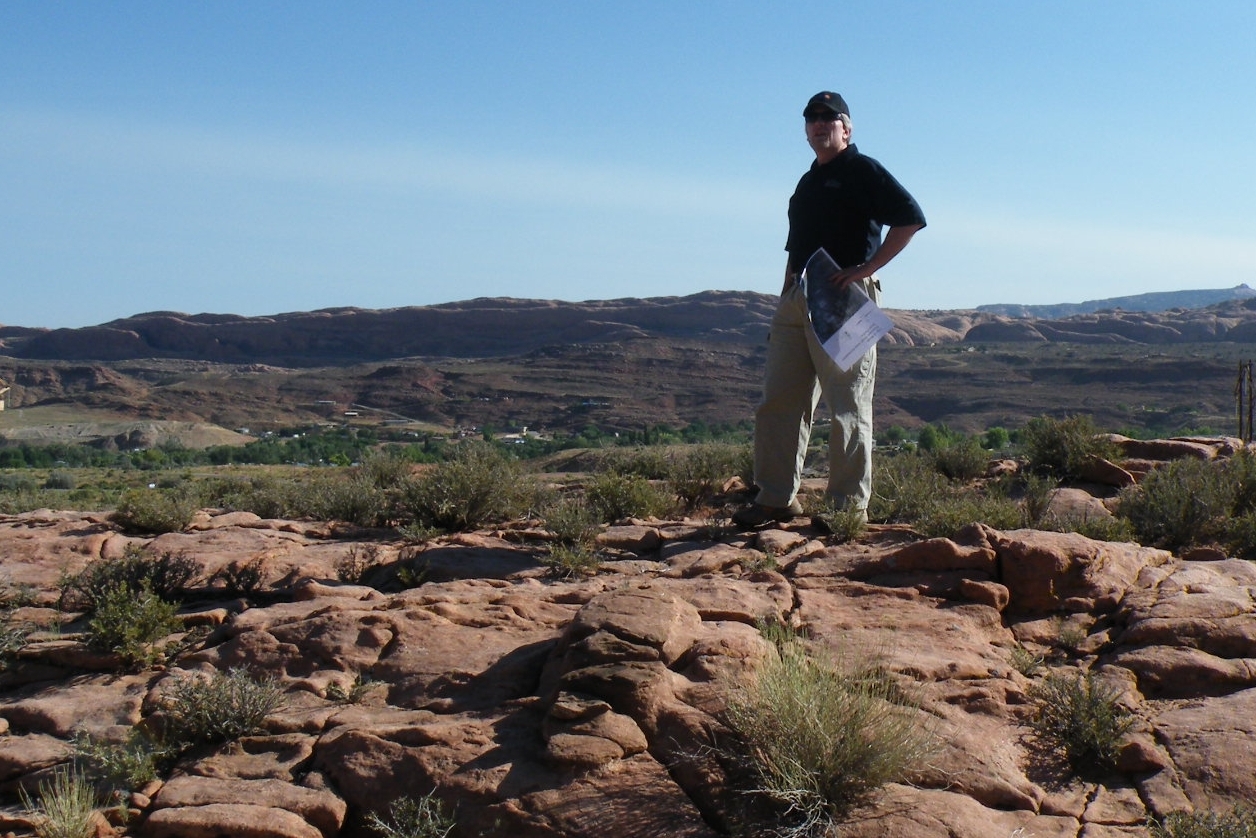Utah State University-Moab has plenty of room to grow now.
The university recently finalized a land exchange agreement to acquire a 40-acre property about three miles south of downtown Moab, bringing years of negotiations to an end.
According to USU-Moab Dean Steve Hawks, the overall land exchange process dates back to the 1990s, when the Holyoak family gave the university a 20-acre parcel for a new campus. The university spent the last five years working to leverage that donation for a larger School and Institutional Trust Lands Administration- (SITLA-) owned property that runs up against the Moab Rim.
“It has been a long time coming,” Hawks said Oct. 13.
The new property near the intersection of U.S. 191 and Mill Creek Drive will allow the university to grow beyond the confines of its existing campus near downtown, while serving as the future home for its bachelor’s- and master’s-degree level programs.
However, the new campus won’t take shape immediately, or even according to a set schedule at this point.
“That’s not clearly pinned down,” Hawks said. “There are a number of dominoes that have to come into place before we’re ready to make an announcement.”
University officials previously scaled back their initial plans for the new campus after they learned that a private commitment of $15 million was not readily available.
In March, Hawks announced that USU-Moab would focus instead on a phased approach that starts off with 32,000 square feet of research, classroom and laboratory space, as well as multipurpose space and common areas. Under the new vision, the campus would continue to grow in clusters, as additional funding becomes available.
Since Hawks made that announcement, Utah State University Provost/ Executive Vice President Noelle Crockett secured funding for the design work on the first phase, and the university is almost ready to unveil the design team’s plans.
“We’re just in the final stages of putting the design together,” Hawks said.
Hawks anticipates that contractor EDA Architects will make minor changes to its design based on any public comment it receives during an Oct. 22 presentation on the project.
Once that work is done, the university will begin to pursue grant funding to develop infrastructure in the area. At the same time, Hawks said it hopes to work alongside the City of Moab and Grand County on any related infrastructure projects that have been or will be identified.
According to Hawks, the city already has funding in place to realign the U.S. 191-Mill Creek Drive intersection; it’s on track to begin that work in 2016, he said.
The realignment work is ultimately just one of projects that the university and its partners will have to tackle before they can break ground on a new campus.
“There are so many variables that are swirling around out there that we’re just trying to pin them down,” Hawks said. “But we are moving forward.”
As he looks back on all of the work that’s been done to date, Hawks said he’s grateful for the support that the city, the county and the school district have given to the university.
City officials, meanwhile, are just as grateful for the opportunities that an expanded campus could create.
“I’m ecstatic,” Moab Mayor Dave Sakrison said Oct. 10. “I’m really confident that Utah State University is going to be the economic engine of this community for years to come, and the sooner that gets off, the better we’ll all be.”
Moab City Council member Heila Ershadi said that a scaled-down development phase will still be an exciting step forward for local residents.
“I think that even a small campus expansion is going to create more higher-education opportunities for families,” Ershadi said Oct. 13. “I know that for a lot of families like mine who would struggle to send their children away for their educations, this is going to make it possible for them to have those opportunities.”
Ershadi noted that the expanded campus will also broaden the local economy, which is heavily dependent on the tourist industry.
“It will play a supporting role in diversifying our economy,” she said. “It’s not going to do it all for us, but it’s a good step for diversification.”
In addition to the city, another key player will be instrumental to future growth of the surrounding area: namely, SITLA.
USU officials have been working in tandem with the trust lands administration on the design of a proposed master-planned community near the new campus site, according to SITLA Resource Specialist Bryan Torgerson.
“The properties were master-planned at the same time so that the entire project would feel like one seamless project,” Torgerson said.
That plan calls for the development of student housing, mixed-use housing, trails and other amenities on 280 acres of adjacent SITLA land. In order to ensure that future development there sticks closely to the plan’s vision, the agency will probably market its lands through a development lease, according to Torgerson.
As for when that development might get under way, Torgerson predicts that it would likely trail any work on the first phase of the new campus.
“The timeline for development is still unknown, but realistically (it) will be slightly lagging USU’s development,” he said.
To learn more about USU-Moab’s plans for a new campus, go to http://moab.usu.edu/; click on “USU Moab Master Plan.”
Anyone who would like to know more about the initial design phase is invited to attend the Oct. 22 presentation from EDA Architects. The presentation will be held from noon to 2 p.m. in Room O at the campus’ east building at 125 W. 200 S.
University preparing for future expanded campus
“I’m ecstatic … I’m really confident that Utah State University is going to be the economic engine of this community for years to come, and the sooner that gets off, the better we’ll all be.” — Moab Mayor Dave Sakrison, on the news that USU-Moab has finalized a land exchange for a new campus




